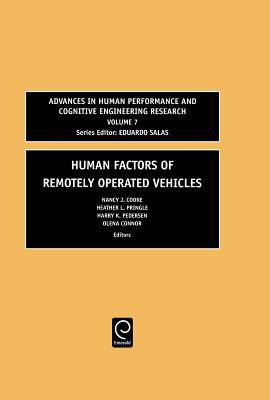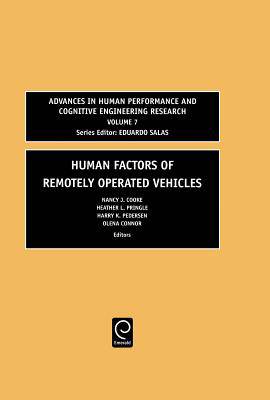
- Afhalen na 1 uur in een winkel met voorraad
- Gratis thuislevering in België vanaf € 30
- Ruim aanbod met 7 miljoen producten
- Afhalen na 1 uur in een winkel met voorraad
- Gratis thuislevering in België vanaf € 30
- Ruim aanbod met 7 miljoen producten
Zoeken
Human Factors of Remotely Operated Vehicles
€ 241,95
+ 483 punten
Omschrijving
The commonly used terms, 'unmanned' or 'uninhabited, ' are misleading in the context of remotely operated vehicles. In the case of Unmanned Aerial Vehicles (UAVs), there are many people involved on the ground ranging from those operating the vehicle from a ground control station, to the people coordinating multiple UAVs in an air operations or air traffic control center. The complexity of remote vehicle operations is also often underestimated and seen as a simple navigation task, neglecting the more complex functions associated with remote camera operations, data gathering, and even weapons activity. In addition, trends in the military and civilian sectors involving reduced staffing, increased number of vehicles to control, and integration with other operations are associated with critical human factors issues. For example, the integration of UAVs with manned aircraft in the national airspace poses numerous human factors challenges. In summary, though these vehicles may be unmanned they are not unoperated, unsupervised, or uncontrolled. The role of the human in these systems is critical and raises a number of human factors research and design issues ranging from multiple vehicle control and adaptive automation to spatial disorientation and synthetic vision. The purpose of this book is to highlight the pressing human factor issues associated with remotely operated vehicles and to showcase some of the state of the art human-oriented research and design that speaks to these issues. In this book the human components of the 'unmanned' system take center stage compared to the vehicle technology that often captures immediate attention.
Specificaties
Betrokkenen
- Uitgeverij:
Inhoud
- Aantal bladzijden:
- 412
- Taal:
- Engels
- Reeks:
- Reeksnummer:
- nr. 7
Eigenschappen
- Productcode (EAN):
- 9780762312474
- Verschijningsdatum:
- 10/03/2006
- Uitvoering:
- Hardcover
- Formaat:
- Genaaid
- Afmetingen:
- 155 mm x 235 mm
- Gewicht:
- 721 g

Alleen bij Standaard Boekhandel
+ 483 punten op je klantenkaart van Standaard Boekhandel
Beoordelingen
We publiceren alleen reviews die voldoen aan de voorwaarden voor reviews. Bekijk onze voorwaarden voor reviews.







